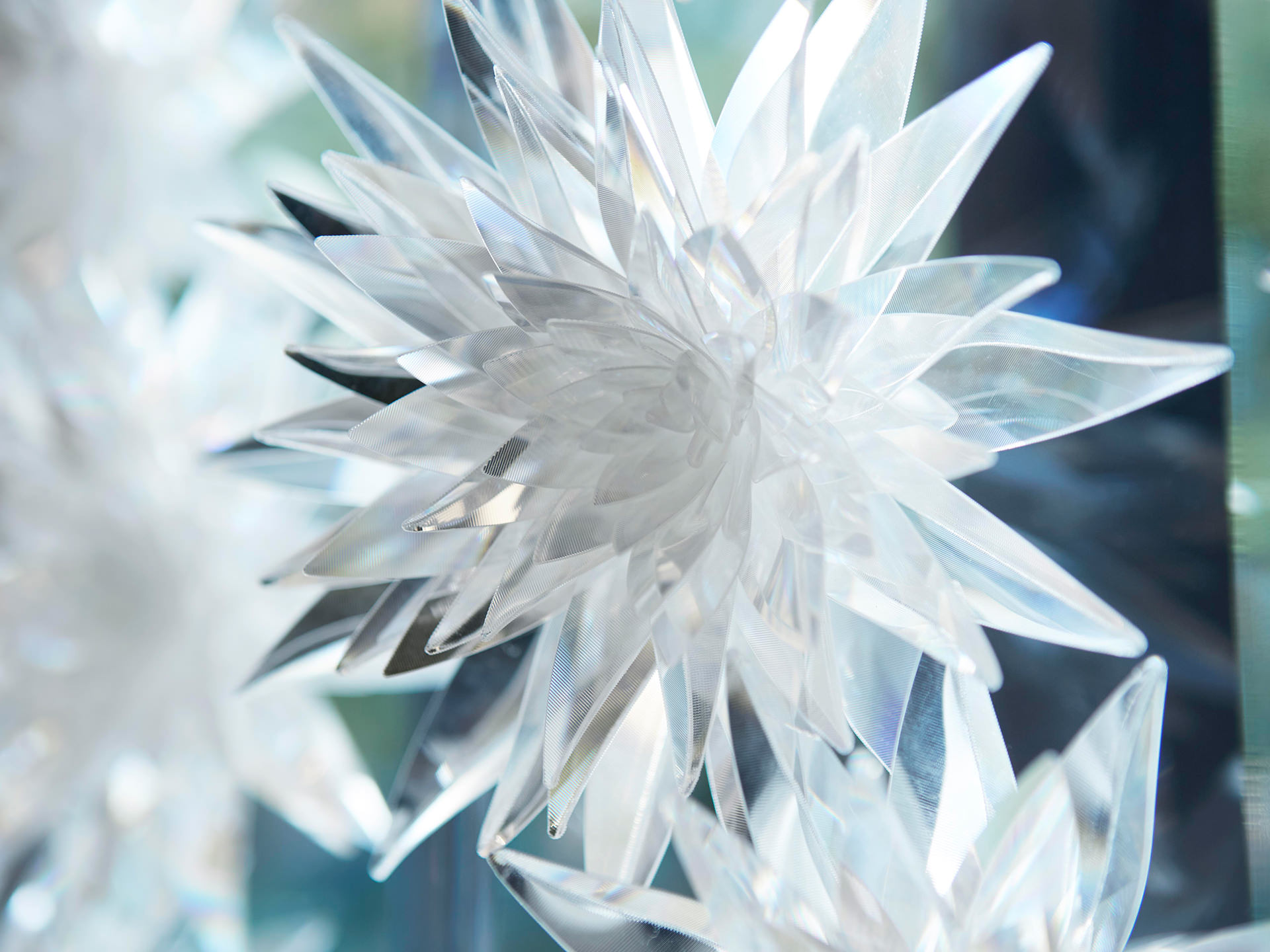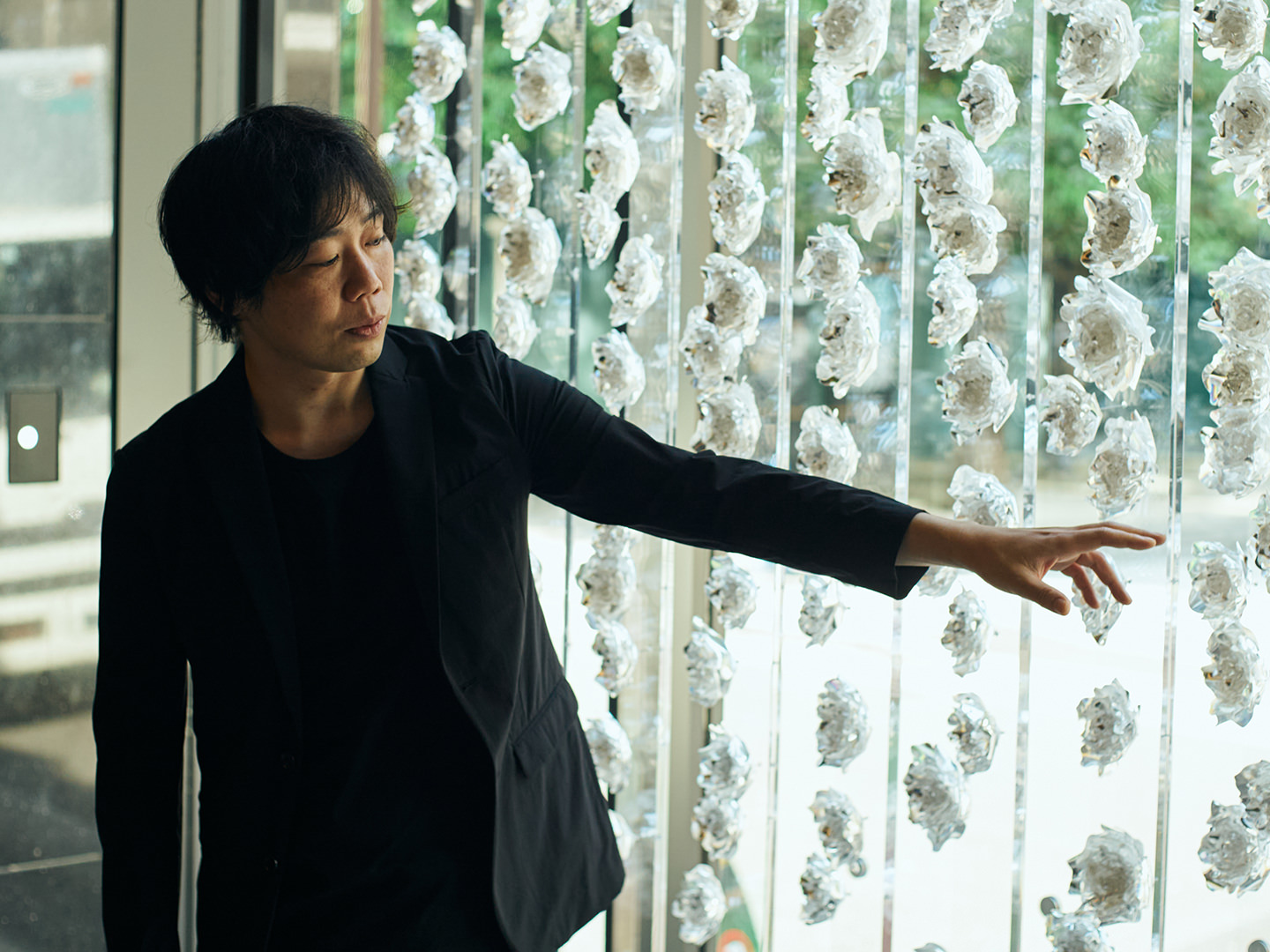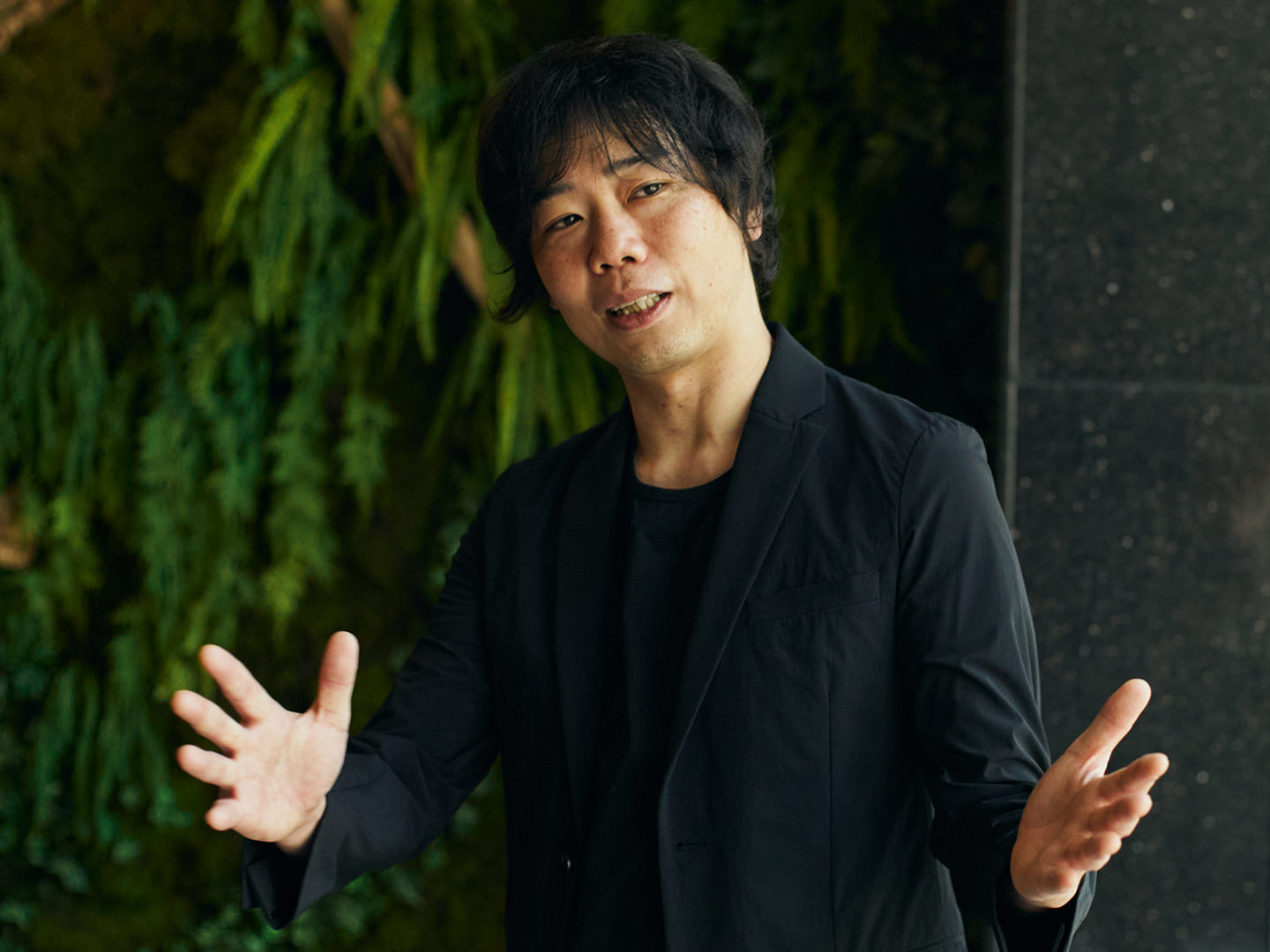——Please tell us about this work.
The title is “Prism “Dahlia + Peony”, and it is a prism installation with a flower motif. I set up a louver-shaped acrylic board in front of the window glass, and placed prisms of peony and dahlia flowers on each side. Peony flowers have a round, feminine, soft feel that envelops the space. Dahlias are more edgy and have a shape that has the power to stimulate space.
——Why did you choose flowers as a motif?
I always want to make light into a form, and this time I chose flowers as a form of light. The flower prism itself shines when it receives sunlight, and at the same time it is designed to store light. The petals are made of translucent prism sheets, allowing the landscape to be seen through them, while the petals are denser near the center, concentrating light. Real flowers show a variety of expressions and colors when exposed to sunlight. This work also aimed for the expression of flowers. .
——Mr. Matsuo creates a variety of works with the theme of light. What is the point this time?
This is a work that receives natural light from behind, but sunlight is really difficult. When creating works using artificial lighting, you can control it to some extent by adjusting the specifications, but this is not the case with sunlight. Above all, the power of sunlight is tremendous, and it is completely different from artificial light. I thought about how much of this energetic power I could incorporate into my work. "Interactivity" is also an important theme, and I view this as a natural phenomenon itself. There is always an interactive relationship between people, nature, and cities. Although the flower objects in this work are fixed, the way they appear changes depending on the amount of light shining in, the viewing position, and the scenery behind them can be said to be nature itself. I hope you enjoy the way it looks, changing depending on Time Zone of the day and the season.












